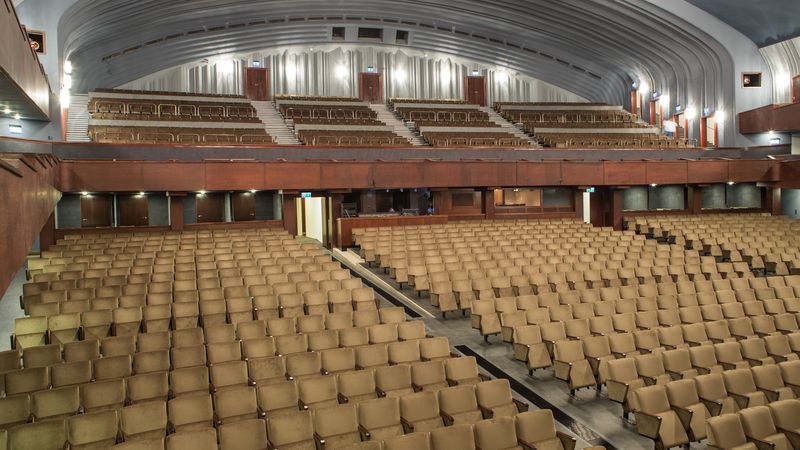
Ever since it opened, Erkel Theatre has boasted the largest auditorium in the country. It currently seats 1800.
The enormous auditorium has been rebuilt a number of times: based on plans by László Vágó and Pál Klunzinger, the acoustics and stage were redesigned and the central balcony box and stall were developed between 1916 and 1920. Between 1949 and 1951, plans drawn up by Oszkár Kaufmann were used to increase the depth of the stage, rebuild the proscenium, turn the proscenium box toward the auditorium, and move the walls of the wing boxes forward. Acoustics engineer Dr. Tamás Tarnóczy was responsible for additional significant acoustic measures, as he supported the installation of the auditorium wooden abat-voix. His plans also formed the basis of the plaster curved wall and ceiling that continue to define the building today.
Initially, the venue had 3400 seats, but due to the introduction of stricter fire prevention regulations and a more comfortable seating layout, the capacity has since been reduced to 1800, but it still preserves its leading position and legendary acoustics.
Sitting in this very auditorium, the audience could enjoy performances by artists like Giuseppe di Stefano, Giacomo Aragall, José Carreras, Nicolai Gedda, Luciano Pavarotti, and Plácido Domingo, and outstanding ensembles including the New York Philharmonic conducted by Arturo Toscanini or the Vienna Philharmonic led by Wilhelm Furtwängler. Internationally renowned personalities such as Frigyes Reiner, Ferenc Fricsay and Lamberto Gardelli also conducted here as well as Leonard Berstein. Famous jazz artists who graced the stage include Ella Fitzgerald, Count Basie, Duke Ellington, and Oscar Peterson.